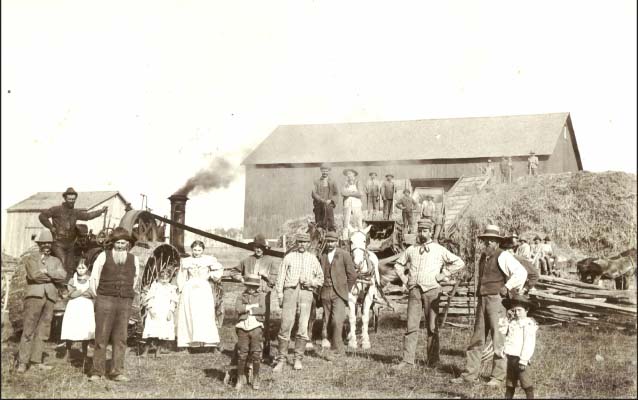Last updated: January 12, 2024
Lesson Plan
Land Use

- Grade Level:
- Middle School: Sixth Grade through Eighth Grade
- Subject:
- Social Studies
- Lesson Duration:
- 90 Minutes
- Common Core Standards:
- 6-8.RH.1, 6-8.RH.2, 6-8.RH.3, 6-8.RH.4, 6-8.RH.5, 6-8.RH.6, 6-8.RH.7, 6-8.RH.8, 6-8.RH.9
Essential Question
How do people survive in their environments? Students will demonstrate how Native American Tribes adapted their lifestyles to the environment in which they lived.
Objective
Critical Content
Students will demonstrate how Native American Tribes adapted their lifestyles to the environment in which they lived.
Student Objectives
Students will be able to identify what aspects of life are affected by environment and how Native Americans adapted their lifestyles to their environments
Background
The first people living on the prairie were the ancestors of the various Native American Tribes. Through archaeology, we can surmise that the plains have been inhabited for centuries by groups of people who lived in semi-permanent villages and depended on planting crops and hunting animals. Many of the ideas we associate with Native Americans, such as the travois, various ceremonies, tipis, earth lodges, and controlled bison hunts, come from these first prairie people.
The migration of the horse from Mexico in the 1700s changed the culture of the Great Plains Tribes to one that was more mobile. Before the horse, the Tribes hunted and traveled in relatively small, restricted areas. The introduction of the horse into Native American society allowed people to cover greater distances. The horse became a status symbol to Native Americans and individuals amassed vast herds of these animals.
The first known historic Tribe in the plains area was the Pawnee who lived in earth lodges part of the year and in tipis during the summer and fall hunts. The earth lodge Tribes such as the Arikara, Hidatsa, Mandan, Omaha, Oto, Ponca, Pawnee, Wichita, Winnebago, among others, planted crops such as corn, squash, and beans and stored their food in underground storage caches. Their semi-subterranean lodges held from 10 to 40 people. Several lodges were grouped together to form fortified villages. Smaller groups ventured out with tipis for the bison hunts, returning to the earth lodge for winter.
Other Tribes associated with the Great Plains were the Lakota-Sioux, Cheyenne, Arapahos, Comanche, Kiowa, and Crow, among others. They lived mainly in tipis, traveling through the Plains region. These groups were the great hunters of the Plains following the bison or "buffalo" and foraging for berries, roots, and other plants. They lived in extended family relationship groups, traveling to familiar places and encampments. Often, they traded and warred with the earth lodge dwellers.
When the prairie was changed by the coming of European Americans, the culture of the Prairie Tribes was dramatically affected. The United States government moved Great Plains Tribes from their traditional homelands onto reservations to make way for ever-increasing settlement. They were forced into a foreign lifestyle that was in opposition to their own.
Preparation
The Homesteaders, Immigrants, and Native Americans unit is broken up into five lesson plans, taking 45-120 minutes to complete, targeting sixth through eighth grade students. A class does not have to complete every lesson in the unit - each lesson comes with its own set of objectives and resources. The ideal group size for this lesson is 36 students or less. This is lesson 3 of the unit.
Procedure
Put each of the following words on a small slip of paper.
-
Fisherman
-
Ocean
-
Desert
-
Irrigation
-
Arctic
-
Forest
-
Log cabin
-
Canoe
-
River
Divide students into groups and give each group a set of words.
Ask students to put the words into whatever groups they want. Then, as a class discuss what groups they created and why they chose those groups. These words all have one thing in common. They compare the environment in which people live and the ways in which they survive.
We know that Native Americans lived in every climate region in the Americas and because of this, the Tribes in different areas developed cultures that were distinct from Native Americans from other regions.
What aspects of life would be affected by the environment?
For example: food, shelter, clothing, transportation, etc.
Using the website http://www.native-languages.org/home.htm#list, have each student select a Tribe. They should research the Tribe, its customs, culture, and the environment in which the Tribe lived. Students will use this information to explain the link between geography and lifestyle, as well as to provide a comparison to life in the United States today. This can be achieved using any of the following options for projects: students could write a song, create a play/movie, build a diorama, create museum artifacts, or make a sketchbook or PowerPoint presentation demonstrating how Native American Tribes adapted their lifestyles to the environment in which they lived.
Students should cover:
Why did they do this?
In what ways does this allow them to best utilize and preserve their resources?
Students should present their projects to the class and discuss these issues.
Then, as a class, compare what you know about these Tribes today. Do we adapt to our environment or do we attempt to change our environment to fit our needs? Which method is more sustainable?
Optional Extension:
Have students write a paragraph about what they can do in their own lives to adapt to their environment.
